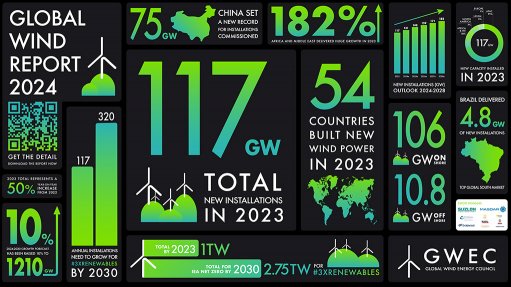Desalination could be an option for KZN, but not in the near future
Desalination may be considered as an option to supply additional water for the growing population in and around Durban, in KwaZulu-Natal, in the long term, but Umgeni Water is continuing with plans for more traditional water schemes for now.
Umgeni Water planning services manager Kevin Meier this week said the utility had conducted a detailed feasibility study to look at desalination as a bulk water supplier a few years ago. It considered the viability of two large-scale desalination plants – one on the South Coast just outside Durban, and the other near Tongaat on the North Coast.
“We will seriously consider implementing one of them in 10 or 20 years time, but the short-term options are the projects we have on the go at the moment, such as the planned uMkhomasi water project and the Lower uMkhomasi bulk water supply scheme,” he told Engineering News Online.
“We believe desalination is definitely an option in the future. The desalination technology is improving all the time and the costs are getting lower. The biggest challenge of desalination is the operational cost of treating the water. It takes a lot of energy to desalinate the water,” Meier said at the Water Desalination, Reverse Osmosis/Membrane and Wastewater Reuse Conference in Cape Town.
However, he said the amount of energy used in desalination was relative, with some other industrial manufacturing operations using much more energy.
Umgeni Water currently provides bulk potable water to municipalities which reticulate this to about six-million people, 85% of them in the eThekwini metropolitan municipality. It sells about 1 200 Mℓ/d of potable water to its customers.
With urbanisation, many people have flocked to Durban and surrounding areas in search of jobs and opportunities, putting pressure on existing water infrastructure.
Meier said the uMmkhomasi water project, a large water resource and supply infrastructure project would be implemented as a combined project between the Department of Water and Sanitation and Umgeni Water, to augment water supplies. The Trans-Caledon Tunnel Authority (TCTA) will be an implementing agent to develop the raw water infrastructure, while Umgeni Water will develop the potable infrastructure.
“The bulk water component will be a large dam on the uMkhomasi river, a 32 km tunnel between the dam and Baynesfield and a 625 Mℓ/d water treatment plant that will treat the raw water and supply it into the eThekwini and Umgungundlovu municipalities,” said Meier.
Environmental-impact assessment (EIA) components are being finalised this year.
“We’re hoping to get environmental authorisation by the end of the year or early next year. The TCTA, which implemented the Lesotho Highlands Water Project is investigating funding options. If all goes to plan, the uMkhomasi water project is expected to be developed by 2028.
“Around the world, desalination plants are the first choice of water supply options, mainly because they don't have other sources. We still have river options open to us, so we would rather use those as they are cheaper and the resource is available. As the technology improves, so desalination will come to the fore and it will really be a competitive option for supply to our areas.
“It will be important to see whether we can use desalination as a viable option to augment the resources we have in the area, which are becoming constrained with growth,” said Meier.
Comments
Press Office
Announcements
What's On
Subscribe to improve your user experience...
Option 1 (equivalent of R125 a month):
Receive a weekly copy of Creamer Media's Engineering News & Mining Weekly magazine
(print copy for those in South Africa and e-magazine for those outside of South Africa)
Receive daily email newsletters
Access to full search results
Access archive of magazine back copies
Access to Projects in Progress
Access to ONE Research Report of your choice in PDF format
Option 2 (equivalent of R375 a month):
All benefits from Option 1
PLUS
Access to Creamer Media's Research Channel Africa for ALL Research Reports, in PDF format, on various industrial and mining sectors
including Electricity; Water; Energy Transition; Hydrogen; Roads, Rail and Ports; Coal; Gold; Platinum; Battery Metals; etc.
Already a subscriber?
Forgotten your password?
Receive weekly copy of Creamer Media's Engineering News & Mining Weekly magazine (print copy for those in South Africa and e-magazine for those outside of South Africa)
➕
Recieve daily email newsletters
➕
Access to full search results
➕
Access archive of magazine back copies
➕
Access to Projects in Progress
➕
Access to ONE Research Report of your choice in PDF format
RESEARCH CHANNEL AFRICA
R4500 (equivalent of R375 a month)
SUBSCRIBEAll benefits from Option 1
➕
Access to Creamer Media's Research Channel Africa for ALL Research Reports on various industrial and mining sectors, in PDF format, including on:
Electricity
➕
Water
➕
Energy Transition
➕
Hydrogen
➕
Roads, Rail and Ports
➕
Coal
➕
Gold
➕
Platinum
➕
Battery Metals
➕
etc.
Receive all benefits from Option 1 or Option 2 delivered to numerous people at your company
➕
Multiple User names and Passwords for simultaneous log-ins
➕
Intranet integration access to all in your organisation


















